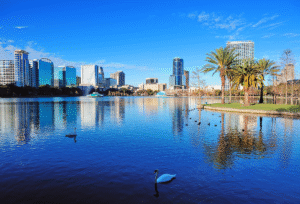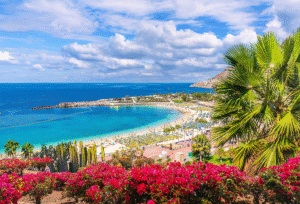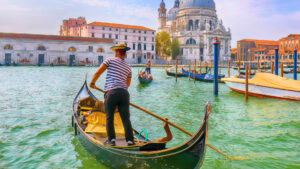Humans have been strutting their stuff on this magical Greek island since the Stone Age, and today’s contemporary holidaymakers are following in the footsteps of a long line of travellers who have visited and fallen in love with Rhodes.
There are those who believe that Rhodes was literally a gift from the gods – Poseidon’s daughter, Rhodes, was the partner of Helios, the Greek sun god, and this is why Rhodes was called the ‘island of the sun.’ The island’s wonderful climate and its position at the crossroads between Asia and Europe is one of the reasons why Rhodes has always been so appealing to travellers over the course of its lengthy history.
Overseas visitors
It does seem as though anyone who was sailing around the Mediterranean, dropped in on Rhodes, and not always with the best intentions. Ancient civilizations such as the Phoenicians and the Mycenae visited and stayed in Rhodes – you can still see remnants of Mycaenean pottery in Ialyssos today. Many of the monuments you’ll see in Rhodes were built around 1500 B.C.E, and this was also when towns Ialyssos, Lindos, and Kamiros were founded.
The Persians also had a go at making a claim to Rhodes, but some parts of the island, including Lindos, managed to remain independent until the whole island joined in an alliance with Athens. Rhodes Town was established in 408 B.C.E during this relatively peaceful part of the island’s history.
Colossus
Many travellers will remember stories of the Colossus of Rhodes and how it was one of the seven wonders of the ancient world. This giant monument did exist, and it certainly was large – the statue was 30 meters in height. Sadly it was destroyed by an earthquake in 226 B.C.E. There are plans for the statue to rise again though, and modern holidaymakers may well be lucky enough to spot the new 135 metre-high statue when they visit Rhodes in the future.
Mixing cultures
History always has been a question of one culture taking over another and when the Romans invaded Rhodes, they simply built their structures alongside existing Greek monuments.
The Acropolis at Lindos is one such example – although it was built by the Greeks, the Romans, and other occupiers of the island, fortified and added to the site. Rhodes became a centre of literature and culture under Roman rule with many leading families moving to the island. History isn’t just about takeover bids — it’s also about family life, food, laughter and culture, and you’ll experience remnants of past invaders when wandering around modern day Rhodes.
Brits have been visiting for centuries
If you think that Brits only started spending time on Rhodes over the last few centuries, then think again – Richard I spent some time here on his way to The Third Crusade and that was back in 1191, during the Byzantine rule. Yes – yet another set of invaders had come to Rhodes to stake their claim on its beauty and treasures. In fact, this set of rulers allowed tranquility and peace to dominate, and their rule lasted from the 4th to the 13th century.
Trading places
Even if you think history is a drag, you may change your mind during your visit to Rhodes. The island today is famous for its wine, jewellery and leather goods. Back in the 1300s Rhodes became a key centre of trade under the Knights Templar. It was famous for its exports of caviar, textiles, spices and – yes, you’ve guessed it – leather goods. There is still a Knights’ quarter in Rhodes Old Town today, where you can identify many buildings from this period of occupation.
When exploring the island you may well wonder why there are minarets, hammams and other traces of Islam dotted around the island. Rhodes Town is home to an outstanding Muslim library dating back to 1794, and you can also spot the impressive Suleiman Mosque in Rhodes Old Town. Thanks to the expansion of the Ottoman Empire, Rhodes was dominated by a new set of occupants until 1912.
Then and now
The history of Rhodes in the early 20th century is one of turbulence – the Italians came and went, and following their decline in strength during the Second World War, the Germans took over power from the Italians.
It wasn’t until 1948 that the Greek flag finally flew over the idyllic island of Rhodes. This led to the development of the island and the start of its booming tourist industry. Whether you’re visiting the island today to relish the party atmosphere or you simply want to spend time pottering around the island’s monuments and eating in some of its enticing tavernas – just remember you’re not the first visitor who has fallen in love with Rhodes, and you certainly won’t be the last.






